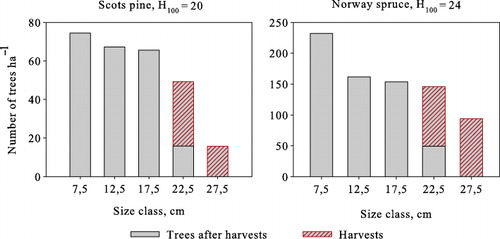Figures & data
![Figure 1a–c. Diameter increment, ingrowth, and mortality of Norway spruce using growth models by Pukkala et al. (Citation2009) and Bollandsås et al. (Citation2008), with size-distribution x = [300,180,120,80,50,30,18,10,2,0,0,…].](/cms/asset/33938f1c-0eb9-40b5-bc44-8c0ddee1afc4/sfor_a_982166_f0001_oc.jpg)
Table 1. Saw log and pulpwood stumpage prices for Scots pine, Norway spruce, and birch, € m−3.
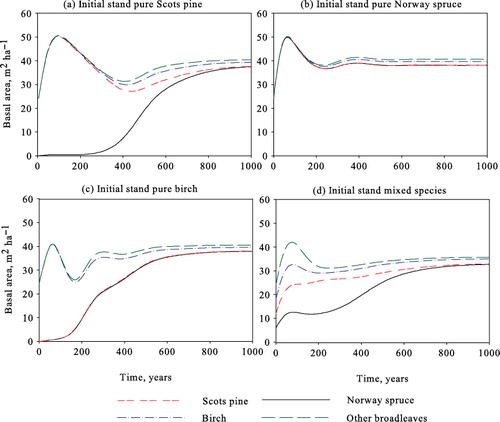
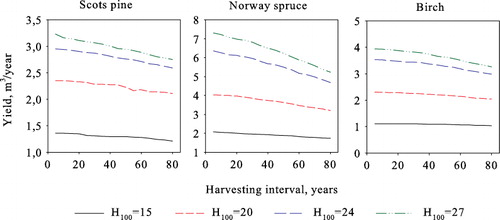
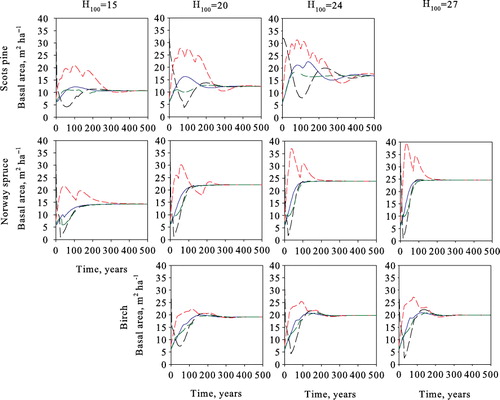
Table 2. The optimal steady-state solution when maximizing volume yield for Scots pine, Norway spruce, and birch using a 5-year harvesting interval.
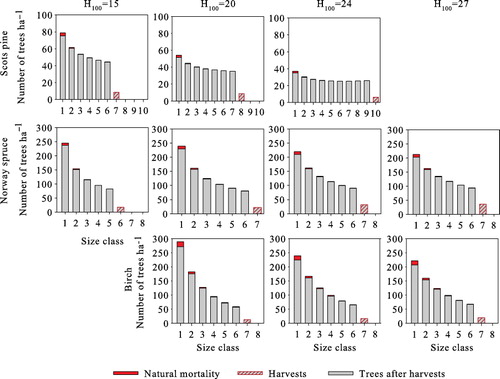
Table 3. Optimal steady-state solutions when maximizing the net present value of forestry income with a 0% interest rate for Scots pine, Norway spruce, and birch using a 15-year harvesting interval
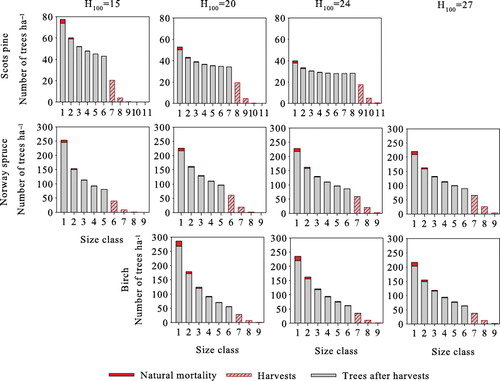
Table 4. Optimal steady-state solutions when maximizing the net present value of forestry income with a 3% interest rate for Scots pine, Norway spruce, and birch using a 15-year harvesting interval.
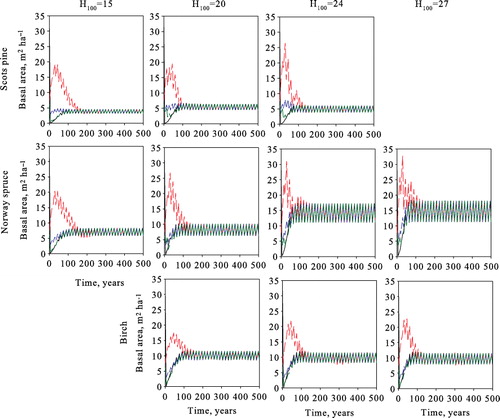
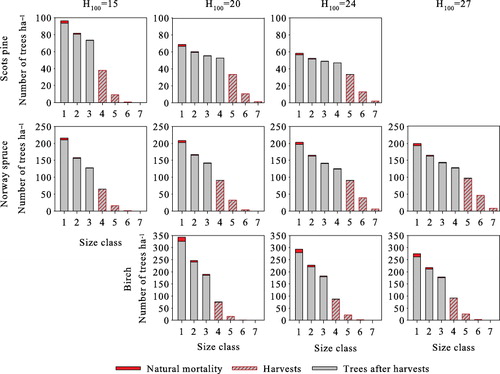
Table 5. Optimal steady states based on the single-tree model. The site for Scots pine is H100 = 20 and H100 = 24 for Norway spruce. An interest rate of 3% and a harvesting interval of 15 years.


